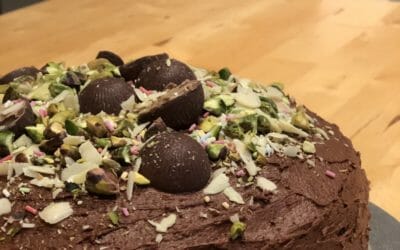Ayurveda, a Sanskrit word implying the “science of life”, originates from Southern India. It is said to be the sister science of Yoga and is a system which emphasises, first and foremost, prevention and longevity of life, along with treatment and cure.
Ayurveda promotes the relationship of and the similarities between the microcosm and the macrocosm – the individual self and all that which surrounds us. Its foundation is based on the five elements, similar to Chinese medicine, and there is evidence to suggest this science was established in Vedic times at least 5000 years ago.
Although the Persians created the technology (a clay distillation contraption) in 2500BC to distill essential oils, prior to this, also in Egypt and the Middle East, the Ayurvedic system (already widely established in India) used plant resin, bark, wood, leaves, and flowers for medicinal and ritual use.
The key consideration, from the Ayurvedic perspective when using essential oils, is the distinction of the energetic properties – not only what symptoms and ailments the oil can treat but additionally whether they’re cooling or heating, drying or moisturising, or finally, a balancer. This information helps us determine which oils are best for each individual constitution in general, along with seasonal applications and of course specific conditions or complaints.
Essential oils, when used in Ayurveda, are used with much the same consideration as herbs. For example, a herb or an oil may be antispasmodic, astringent, a diuretic, an emmenagogue, rejuvenative, a stimulant, alterative, or an expectorant.
Interesting to note – we know that essential oils are lipophilic (fat loving) and therefore mix well with other carrier oils. However, there are some essential oils that are hydrophilic (water loving) and due to their high polarity they will mix well with water. An example of a hydrophilic oil (perhaps for your next bath!) would be rose or geranium.
The oils are made up of a vast number of chemical constituents which work in co-operation producing various results on the body and mind. These have a direct impact on the correction of any imbalances one may be experiencing. In Ayurveda, there is the concept of the three “doshas”, Vata, Pitta, and Kapha. Every one of us is made up of all three (as they’re concepts based on the five elements which are the building blocks of our existence). However, due to our innate individual constitutions – dictated through genetics and our birth – we each have a unique “balance” of these three doshas.
Vata is associated with being dry, cold, light, and mobile. When these qualities are in excess or out of balance we can use oils that are grounding, warming (not hot), calming, heavy, and wet. Some examples are: frankincense, clary sage, sandalwood, ginger, cardamom, basil, coriander, eucalyptus, chamomile, lavender, marjoram, myrrh, and camphor.
Pitta is associated with being hot and wet. When these qualities are in excess or out of balance we can use oils that are calming, cooling, and drying. Some examples are: chamomile, peppermint, spearmint, coriander, jasmine, coriander, lemon, wintergreen, sandalwood, lavender, neroli, rose, spikenard, cedarwood, lime, and lemongrass.
Kapha is associated with being moist, cold, and heavy. When these qualities are in excess or out of balance we can use oils that are drying, heating, and stimulating. Some examples are: basil, camphor, juniper berry, oregano, cinnamon, clove, cardamom, eucalyptus, black pepper, myrrh, ginger, lime, spikenard, and thyme.
Additionally, a worthwhile consideration is the carrier oil one uses with their essential oils. Carrier oils for dilution and blending have their own distinct characteristics and therefore what you choose to use is very important.
Carrier oils to reduce Vata qualities (and for mid autumn – mid winter usage): Jojoba, cold-pressed black sesame, flax, castor, avocado, primrose, apricot kernel, rosehip.
Carrier oils to reduce Pitta qualities (and for late spring – early autumn): coconut oil, olive oil, sunflower oil, jojoba, apricot kernel, primrose, aloe vera.
Carrier oils to reduce Kapha qualities (and for mid winter – mid spring usage): sweet almond, mustard, jojoba, apricot kernel, primrose, rosehip.
Finally, in the Ayurvedic system there is an appreciation for the immense impact the essential oils have on the mind. In both Yoga and Ayurveda we learn about the concepts of Tamas, Rajas, and Sattva – three various states of mind which can be influenced by our mental impressions, emotions, patterning, and what we expose ourselves to (media, relationships, conversation, etc). Tamas is a state of dullness, inertia, depression. Rajas is a state of restlessness, desires, activity, and ambition. Sattva embodies qualities such as stability, calm, discriminating, intelligent, peaceful, compassionate, nurturing, receptive, and devotional. In a similar way to using the oils to help support the health of the physical body and the balancing of the three doshas, the same can be said for harmonising the mind and emotional state. Through harnessing the sense of smell, via using aroma to trigger the olfactory system or nerve, the limbic system of the brain is stimulated. This is where the processing of emotions, memories, and desires occurs.
Essential oils have a very great and instantaneous effect on our very existence, far beyond being beautiful aromatics. Hence, the quality of the oils one uses is paramount. When using topically, remember your skin is the second digestive organ (if it’s not good enough to take internally, why absorb it on the layers of your body?). When inhaling, sense that the mind is digesting impressions and emotions. When being used internally, less is more. Small, safe, frequent quantities are far more impactful than larger doses.
Our world needs healing in many ways, on many levels. The use of essential oils brings the most potent concentration of nature right into our hands for immediate usage. Valuing this knowledge we can work together to reduce dis-ease, the heavy dependancy on conventional medicine and health care systems, lower medical costs, and inspire greater responsibility as individuals to be pro-active with regards to our health, vitality, and longevity!
Want to invite these incredible plant extracts into your life? Find out more HERE.




0 Comments